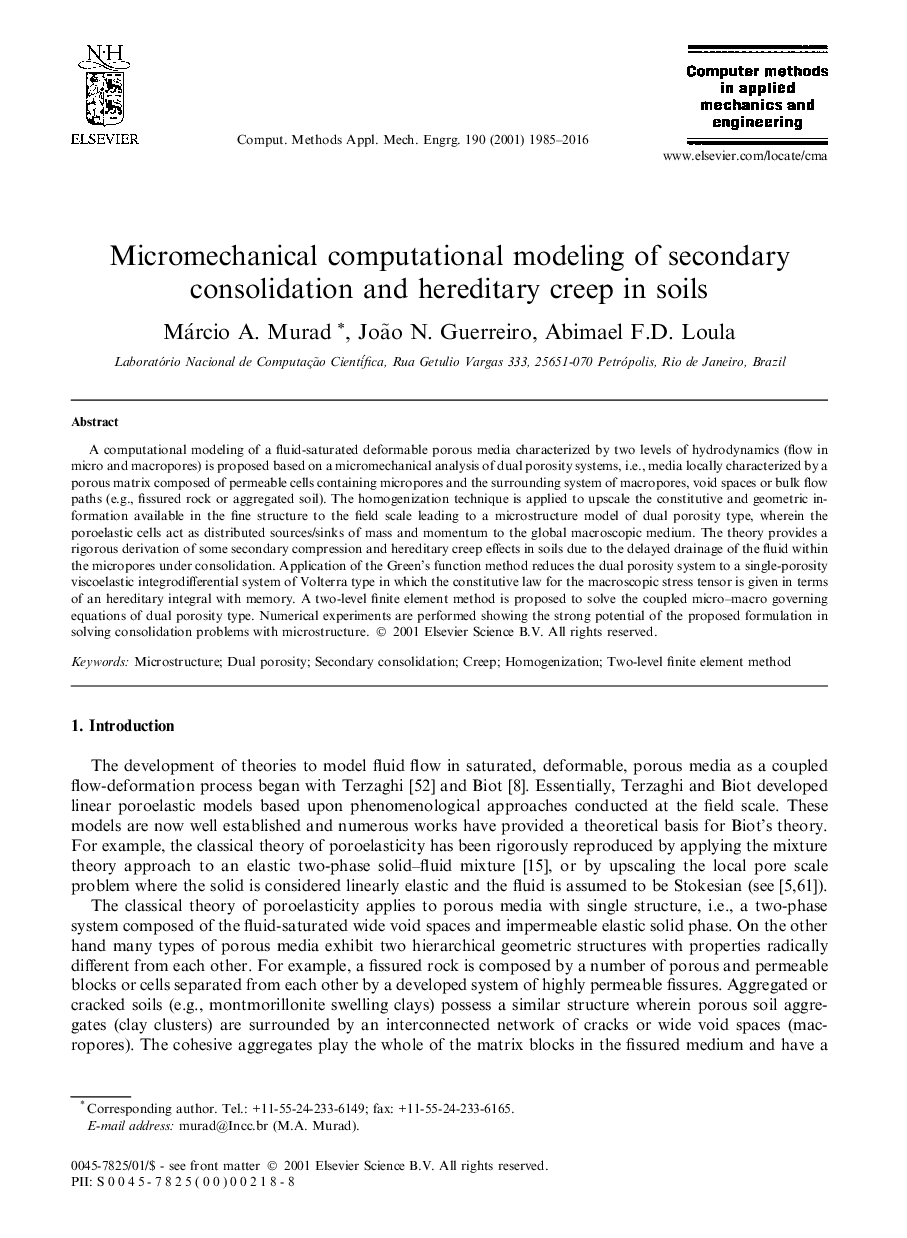| Article ID | Journal | Published Year | Pages | File Type |
|---|---|---|---|---|
| 501411 | Computer Methods in Applied Mechanics and Engineering | 2016 | 32 Pages |
A computational modeling of a fluid-saturated deformable porous media characterized by two levels of hydrodynamics (flow in micro and macropores) is proposed based on a micromechanical analysis of dual porosity systems, i.e., media locally characterized by a porous matrix composed of permeable cells containing micropores and the surrounding system of macropores, void spaces or bulk flow paths (e.g., fissured rock or aggregated soil). The homogenization technique is applied to upscale the constitutive and geometric information available in the fine structure to the field scale leading to a microstructure model of dual porosity type, wherein the poroelastic cells act as distributed sources/sinks of mass and momentum to the global macroscopic medium. The theory provides a rigorous derivation of some secondary compression and hereditary creep effects in soils due to the delayed drainage of the fluid within the micropores under consolidation. Application of the Green's function method reduces the dual porosity system to a single-porosity viscoelastic integrodifferential system of Volterra type in which the constitutive law for the macroscopic stress tensor is given in terms of an hereditary integral with memory. A two-level finite element method is proposed to solve the coupled micro–macro governing equations of dual porosity type. Numerical experiments are performed showing the strong potential of the proposed formulation in solving consolidation problems with microstructure.
